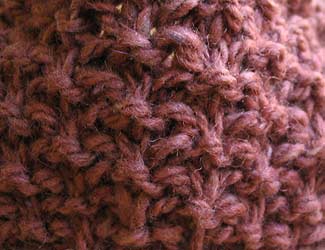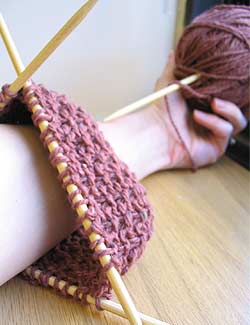In the sphere of birth and newborn care I am an optimist. Except. Except where yeast is concerned. Nothing rings the death knell of breastfeeding to me quite like a diagnosis of breast yeast.
Partly this stems from my own experience: five weeks of nystatin,
Dr. Newman's nipple cream, diflucan, diet change, pumping and pain, pain, PAIN. The classic description of breast yeast pain is the sensation of crushed class in the breast. True, sister, true.
But back up. Where does yeast come from? We have it in our bodies always. When it becomes problematic, it's not a case of yeast colonizing a previous pristine body. Rather, it is an overabundance of yeast in its usual places and its appearance in places it might not ordinarily be. This can happen because of antibiotics administered in labor (or to the baby after labor). It can arise because hormones and fatigue and any other combinations of factors have one's whole system out of whack. In the baby, it often appears in the mouth (thrush), where the sugars of breast milk remain in a dark, warm environment. From baby's mouth to mother's nipple to the milk ducts inside.
So the acquisition of yeast is pretty easy, really. It's the bringing back into balance of it that is so difficult.
One of my biggest pet peeves is that health care providers so often fail to follow the first rule of yeast treatment: TREAT THE MOTHER AND THE BABY. I don't know how many times a mother has reported that her baby has thrush and when I ask is she being treated, too, get a blank look. If the baby has yeast and is being breastfed, the yeast is likely to travel from baby to mother.
Similarly, I know some women who have yeast but cannot get their pediatrician to prescribe a treatment for the baby because the baby is asymptomatic. How can one expect to clear the yeast from one's breasts if the baby who latches on to them 10 times a day is a repository for yeast-tainted milk?
The best results are often through family practice doctors. Because they care for both members of the breastfeeding team, their treatment is for the unit, not the parts. Though even then I've seen some family practice doctors treat only one half of the pair.
Once yeast is established in the milk ducts, it is very stubborn about leaving. Dr. Newman's diflucan protocol is a very
hard-hitting systemic dose (because how do you get medicine just to the breast?):
"Your prescription will be for fluconazole 400 mg as a first dose, followed by 100 mg twice daily until you are pain free for a full week, which usually means at least two weeks. This seems, on the basis of our experience, a fairly good guarantee against relapse. However, this means that although most mothers require only the usual two weeks, some need longer treatment. Occasionally it may take up to seven to ten days for the pain to even start going away. Call if there is no relief in seven days. If there is no relief in 10 days, none at all, it is very unlikely fluconazole is going to be of any help.
Note: The mother’s two week prescription is likely to cost between $300 and $350, though there is now a generic fluconazole available which is less expensive."
This last point is an important one, too. At the time I was plagued with yeast, our insurance refused to cover the prescription because it was much higher than medically necessary. !!
And remember that for every feeding,
for the duration of the feeding, through the weeks that this last-line treatment is underway, the pain is excruciating. Breasts feel as though they are being lanced from the inside out.
When my yeast infection hit, my son was five months old. He was nursing at 3 hour intervals during the day and not during the night. When yeast appears in new mothers (as it has in my most recent client), babies are often nursing every two hours round the clock. The pain of nursing leads to anxiety. Compound that with sleep deprivation and the situation often feels unbearable. To tell a woman that she may experience relief anywhere from 3-10 days after starting diflucan (if her doctor will even prescribe it) might result in her throwing a copy of "The Womanly Art of Breastfeeding" at your head. Chances are she's already been through several weeks of pain before the diflucan option is presented.
For many women in this position weaning is the only way out. That was my final decision. When the diflucan was too expensive (my husband was in grad school, after all), I began to eliminate feedings. Within a week things were much improved. At that point my son was nursing three times a day and getting formula for his remaining feedings. That was the routine we maintained until he abruptly self-weaned at 11 months.
All of that was fine with me. I'd have liked to breastfeed exclusively, but felt happy that I was still providing breastmilk three times a day. After all, he was already late in his infancy. Had he been 5
weeks old, I don't know what I'd have done. I actually think I'd have thrown in the towel sooner.
I'm crossing my fingers for my client. She's starting the diflucan routine and her baby is on the same medicine.
I realize this is a lot of posting space devoted, basically, to a rant. I just wish breast yeast was taken more seriously. I'd like to see research into managing it as well as more on-the-ball reactions from caregivers when they encounter it. Just as there are few true obstetric emergencies, there are also few real breastfeeding emergencies. In my mind the appearance of yeast, however modest, in either part of the breastfeeding team, is an emergency.
Labels: breastfeeding, postpartum








